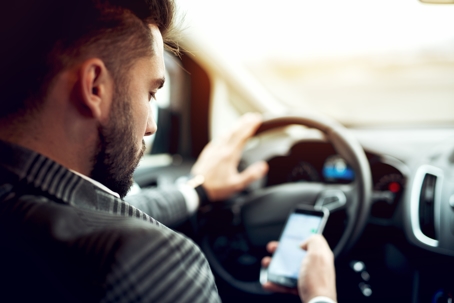In the digital age, cell phones have become ubiquitous, accompanying us wherever we go, including behind the wheel. While mobile devices offer convenience and connectivity, they also pose a significant risk when used irresponsibly while driving. Distraction resulting from texting, calling, or browsing on a cell phone can lead to devastating car accidents. In this article, we explore how cell phone records serve as crucial evidence in determining fault in car accidents, shedding light on the dangerous consequences of distracted driving.
Understanding the Impact of Distracted Driving:
Distracted driving, defined as any activity that diverts attention away from driving, poses a serious threat to road safety. One of the most prevalent forms of distraction is cell phone use, which includes texting, calling, browsing social media, or using apps while driving. The consequences of distracted driving can be severe, resulting in collisions, injuries, and loss of life. According to the National Highway Traffic Safety Administration (NHTSA), distracted driving claimed 3,142 lives in the United States in 2019 alone.
The Role of Cell Phone Records in Establishing Fault:
In the aftermath of a car accident, determining fault is essential for insurance claims, legal proceedings, and accountability. Cell phone records can provide crucial insights into the actions of drivers leading up to the collision. Here's how:
- Call Logs and Text Messages: Cell phone records contain detailed information about calls made and received, as well as text messages sent and received. By analyzing call logs and text message timestamps, investigators can establish whether a driver was engaged in a phone call or texting at the time of the accident. If it can be shown that the at-fault driver was using their cell phone shortly before or during the collision, it suggests distraction and lack of attention to the road.
- Data Usage and App Activity: Beyond calls and texts, cell phone records may also include data usage logs and app activity. Evidence of web browsing, social media usage, or app interactions while driving indicates distraction and impaired driving behavior. Such activities divert attention from the road, increasing the risk of accidents.
- GPS Location Data: Cell phone records may include GPS location data, providing insights into the whereabouts of drivers leading up to the accident. Mapping the movements of drivers in relation to the collision site can help reconstruct the sequence of events and determine liability.
- Witness Corroboration: Cell phone records can corroborate witness testimonies regarding the behavior of drivers before the accident. Witnesses may report observing a driver using their cell phone or exhibiting erratic driving behavior consistent with distraction. Cell phone records provide objective evidence to support such claims.
In conclusion, cell phone records play a pivotal role in establishing fault in car accidents, particularly in cases of distracted driving. By analyzing call logs, text messages, data usage, and GPS location data, investigators can determine whether a driver was distracted by their cell phone in the moments leading up to the collision. This evidence is crucial for insurance claims, legal proceedings, and promoting awareness of the dangers of distracted driving. As responsible drivers, it's imperative to prioritize safety behind the wheel and refrain from using cell phones while driving to prevent accidents and save lives. Remember, no text or call is worth risking your safety or that of others on the road. If you were injured in a car accident, give The Watson Firm a call for a free case evaluation.

